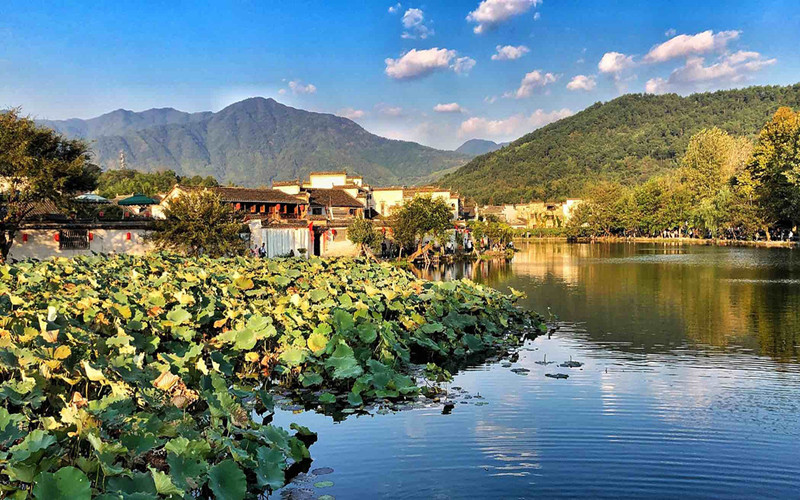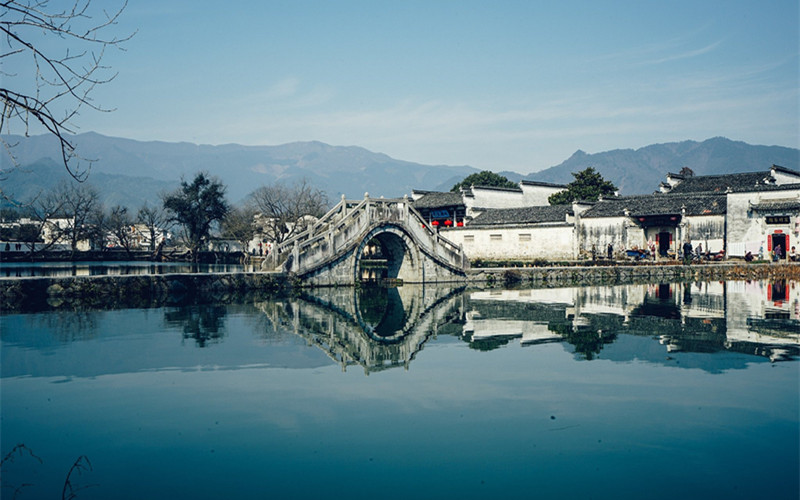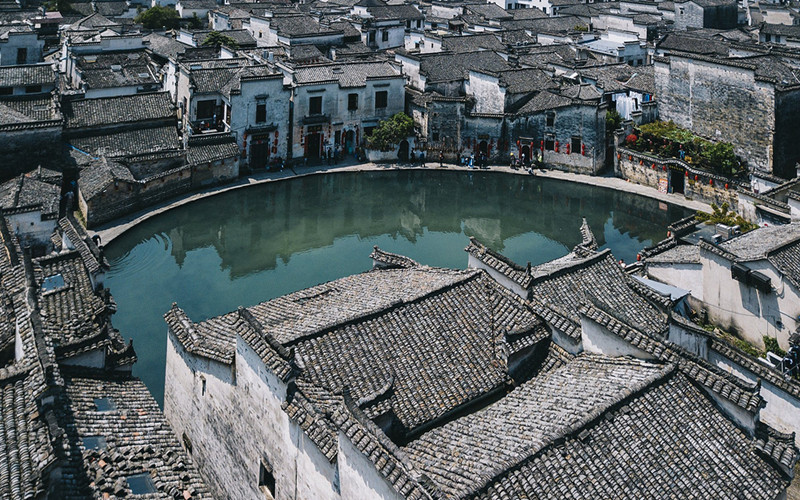Hongcun is located 11 kilometers northeast of Yixian County, 68 kilometers northwest of Huangshan City, East China's Anhui Province. Hongcun Village Scenic Area , a top representative of Huizhou style ancient villages, is known as the "rural area in Chinese painting". And it is one of must-see attractions while you travel in Huangshan.
What to see?
Founded originally during the Shaoxing period of the Southern Song Dynasty (1131-1162 AD), Hongcun Village was gradually developed into a magical "Cow-shaped Village" from the Yongle period of the Ming Dynasty (1403-1424 AD). There are many roads are well connected in the village. It has multiple entrances including the three major entrances as below: The first is the village entrance among the local population in the west of the village, where two ancient trees, red poplar and ginkgo, are planted. The second is the entrance leading to the Siqiao Bridge on the west side of Nanhu Lake. The third entrance is to the parking lot on the east side of South Lake, which is the larger entrance of Hongcun and the main entrance. Generally, tourists need to enter through this entrance and tour the ancient village from south to north.
South Lake (Nanhu 南湖)
The South Lake, also called Nanhu 南湖 in Chinese, is one of the essence scenic spots located at the south end of Hongcun Village. It is a bow shaped artificial lake excavated in 1607 during the Ming Dynasty (1368-1644 AD). The water surface is wide on the lake. The painted bridge across the lake is the place where Li Mubai led his horse in the movie

On the shore of north bank of the lake, Nanhu Academy is standing there. During the Qing Dynasty(1645-1911), the six private schools by the lake were merged into Nanhu Academy, making the academy appear very spacious. After watching South Lake, you can head north to visit Jingde Hall and Wang Daxie's Former Residence (Zhenqi Hall) along the way.
Moon Marsh (Yuezhao 月沼)
The Moon Marsh, also known as Yuezhao 月沼 in Chinese, is an essence scenic spot in the center of Hongcun Village, which was built in the Emperor Yongle period of the Ming Dynasty (1368-1644 AD). The surrounding Hui style buildings are reflected in the Moon Marsh, which is a good place to take photos. Unfortunately, the moonlit swamp is often crowded with tourists, making it difficult to take a photo without anyone around.

On the north bank of the Moon Marsh, there is a temple called Le Xu Tang 乐叙堂. The residents of Hongcun are mostly surnamed Wang, so it is also called the Wang Clan Ancestral Hall. The other houses in the village were all in the Qing Dynasty(1368-1644), but only the Le Xu Tang came from in the Ming Dynasty (1368-1644). Compared to the complexity of Qing Dynasty architecture, Ming Dynasty architecture appears simple. On the west end of the north side of the Moon Marsh, there is also a temple called Jing Xiu Tang (敬修堂) built in the Qing Dynasty(1645-1911).
Chengzhi Hall (承志堂)
Walking to the north,you can visit Chengzhi Hall (承志堂) which is the former wealthy buildings of Hongcun Village. Chengzhi Hall is a residence of Wang Dinggui who was a large salt merchant in the late Qing Dynasty (1644-1911). The Chengzhi Hall has not only many rooms for study, kitchen, stable, bodyguard, male and female servant, but also a "Paishan Pavilion" where mahjong tiles are played.

The house comes with its own pond and well which water cannot be used outside the house. It is worth to see is the exquisite Huizhou style three carvings, some of which are also painted with gold powder, which can be said to be magnificent.
You can also take a look at the ancient buildings such as Deyi Hall, Shuren Hall, and Taoyuan Residence in the village.
Travel Tips
Address: Hongcun Scenic Spot, Hongcun Town, Yi County, Mount Huangshan City
Tel : 0559-5541158
Official website: http://www.hongcun.com.cn/
Opening hours: 08:00-17:00
Entrance Tickets: CNY104
